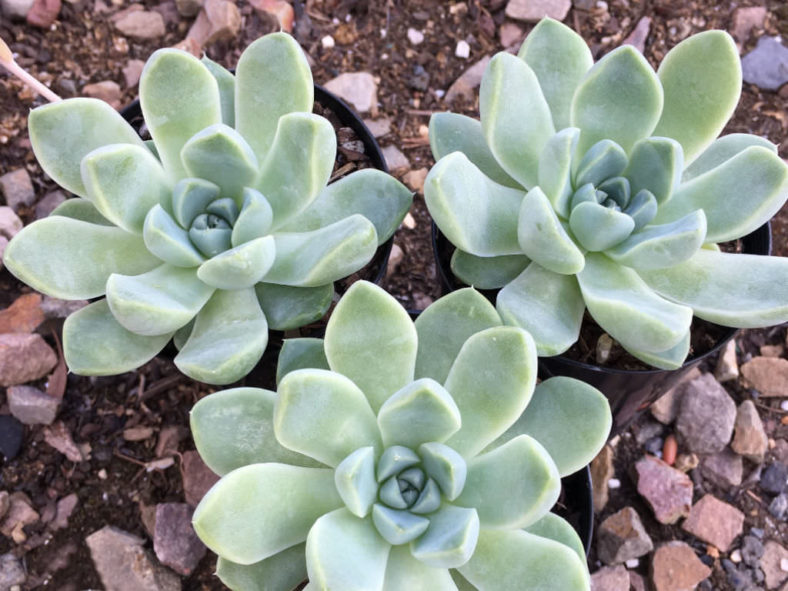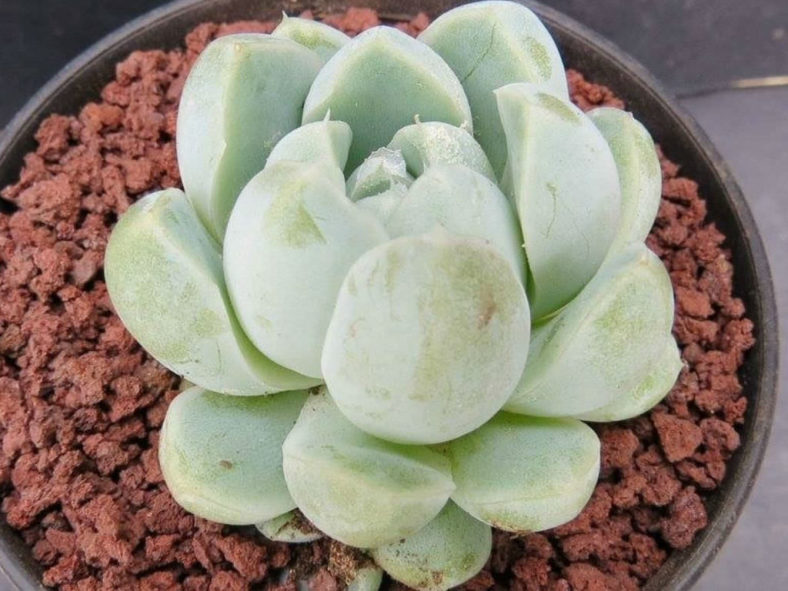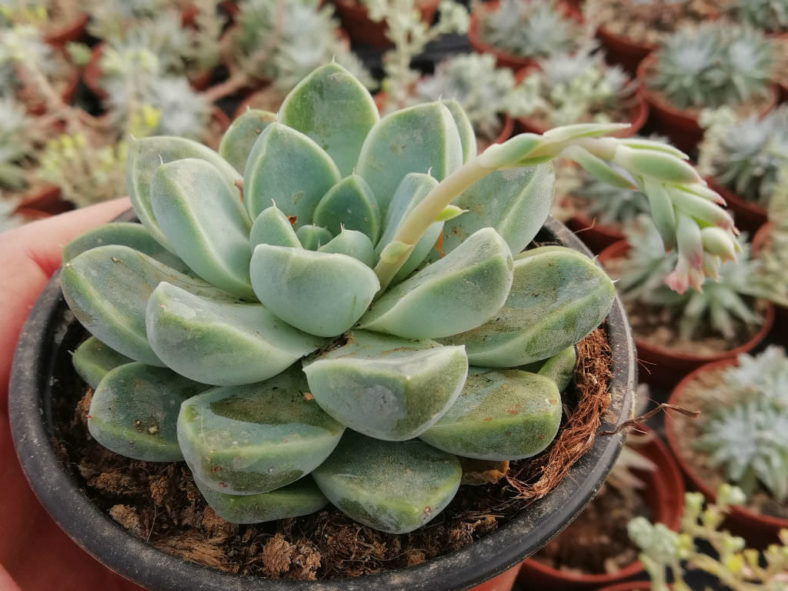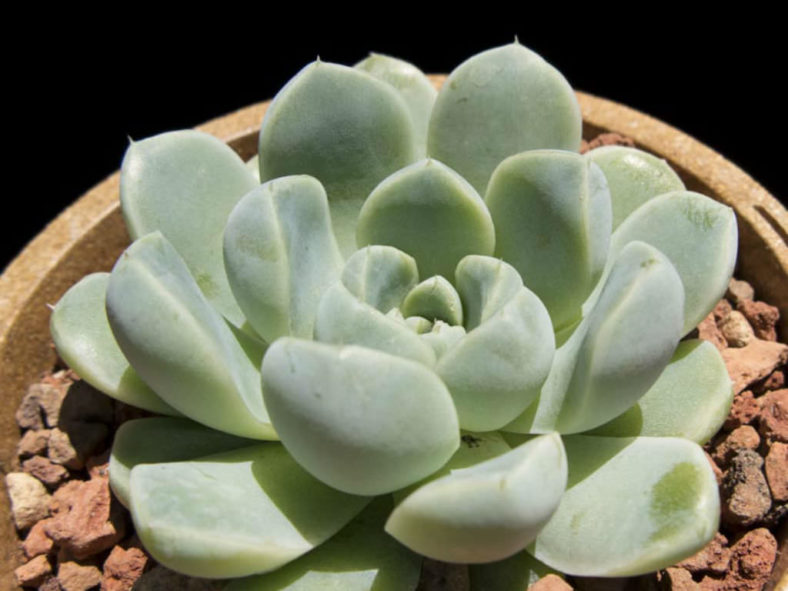Scientific Name
Echeveria albicans Walther
Accepted Scientific Name
Echeveria elegans Rose
Synonym(s)
Echeveria elegans 'Albicans'
Common Name(s)
Whitening Echeveria
Scientific Classification
Family: Crassulaceae
Subfamily: Sempervivoideae
Tribe: Sedeae
Genus: Echeveria
Origin
Echeveria albicans was described based on a cultivated plant with no wild origin. It is one of the forms of the variable Echeveria elegans.
Description
Echeveria albicans is an attractive clump-forming succulent that forms dense, stemless rosettes of whitish leaves. The rosettes can reach up to 4 inches (10 cm) in diameter. The leaves are obovate-oblong and can measure up to 2 inches (5 cm) long and 1 inch (2.5 cm) wide.
The flowers are conoid to urn-shaped, pink with yellow or greenish tips, and appear on arching, usually unbranched stalks that can grow up to 10 inches (25 cm) tall.

Hardiness
USDA hardiness zones 9a to 11b: from 20 °F (−6.7 °C) to 50 °F (+10 °C).
How to Grow and Care
Find a spot with full sun or partial sun. It may handle some shade but shouldn't be kept entirely in the shade. If you grow it as a houseplant, keep it near a window that gets direct sunlight for a good portion of the day.
While the plant can tolerate a range of temperatures, it is recommended for USDA hardiness zones 9a to 11b. Mexican Snowball can tolerate the cold better than most Echeverias. However, you should take your Mexican Snowball indoors if you expect a harsh winter.
Watering is not a major requirement with this drought-tolerant succulent. During the summer, you may need to water it once per week. During the winter, you may barely need to sprinkle the pot or ground with water. Provide just enough water to keep leaves from shriveling. However, you don't want the plant to get wholly dried out frequently. Keep an eye on the soil and the leaves. If the leaves start to develop spots or appear thinner, you may not give the plant enough water.
Learn more at How to Grow and Care for Echeveria.
Links
- Back to genus Echeveria
- Succupedia: Browse succulents by Scientific Name, Common Name, Genus, Family, USDA Hardiness Zone, Origin, or cacti by Genus
Photo Gallery
Click on a photo to see a larger version.


